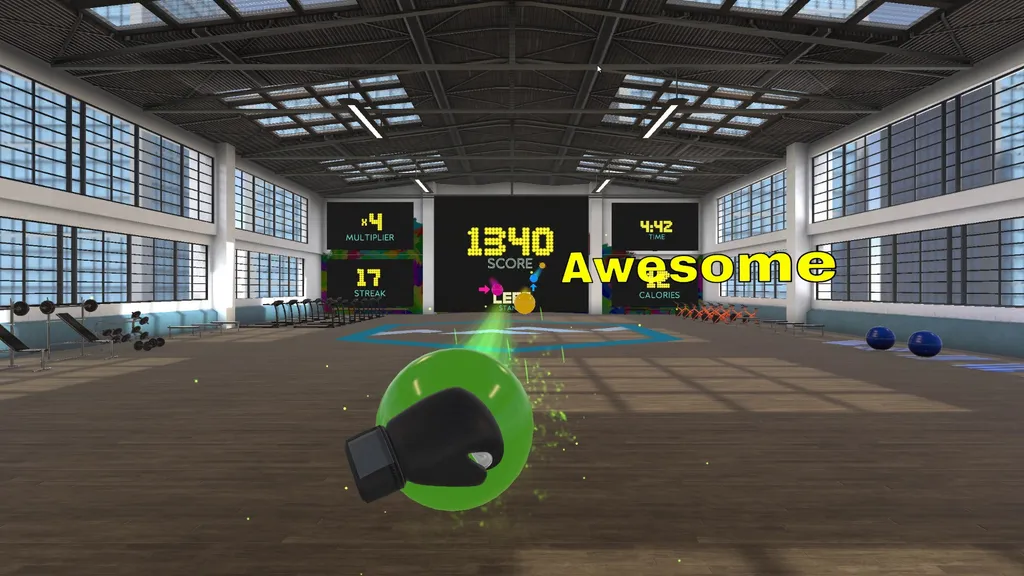Despite alarming rises in global obesity, there has never been so few excuses to avoid exercise. Wearables such as the Apple Watch and Fitbit can monitor our movement and biometrics to personalise fitness goals and aid motivation. The Modius goes one step further, stimulating the wearer’s vestibular nerve, tricking the mind into thinking the body is being more physically active than it is, and there are thousands of hours of YouTube workouts to keep us moving in the bedroom (get ready for the celebrity workout DVD commercials next month!)
Some high end gyms are investing heavily in experiences that break the boredom of repetitive exercise and improve results in shorter times. Virgin Active’s altitude chamber spin class, for example, aims to make cycle classes even more challenging by sucking oxygen out of the air.
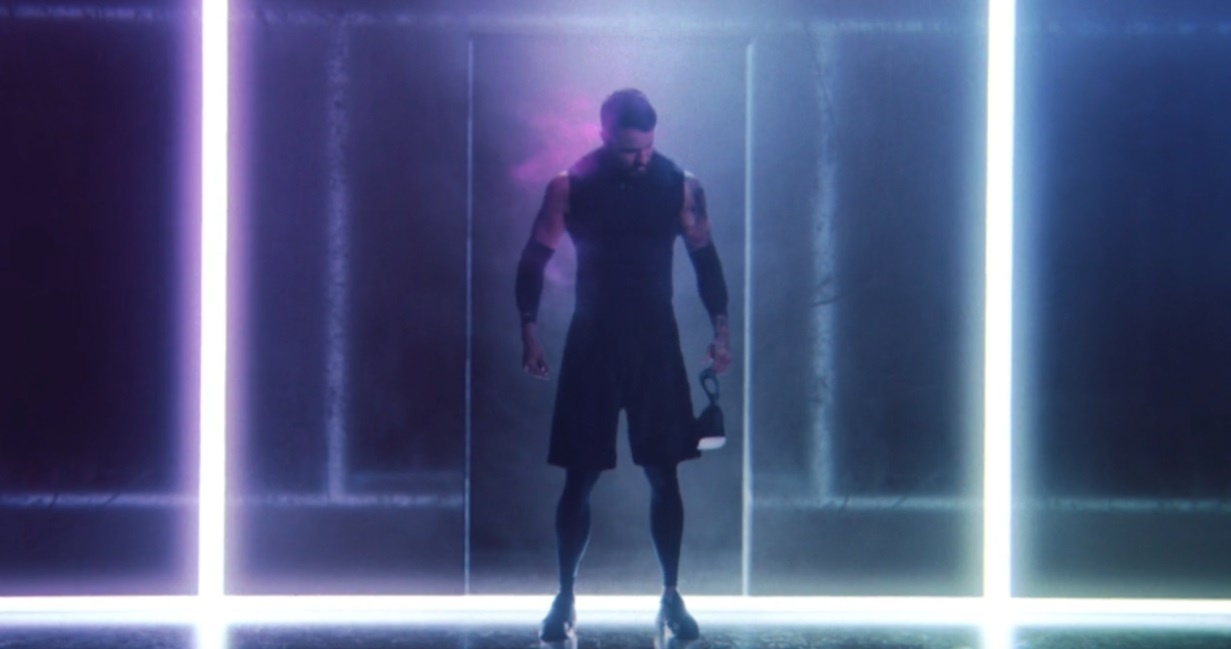
Over 400 gyms worldwide now offer Icaros – a virtual reality exercise machine that delivers a core workout by making it seem like users are flying and deep-ocean diving, and Holodia takes traditional exercise equipment, such as rowing machines, and enhances the experience using virtual reality to make the user feel they are travelling through fantasy worlds.
Black Box VR are looking at “creating the world’s first virtual reality gym experience” which gamifies exercise making it more like a futuristic sport rather than a video game. It is set to use machine learning modules to personalize your programmes as well as a cable pulley system to provide real muscle and strength-building resistance for your entire body.
Select gyms around the world offer The Trip, by world fitness leaders Le Mills. This fully immersive workout experience combines a cycling workout with a journey through digitally-created worlds, seen on a curved cinema-scale screen.
It is Les Mills that kickstarted my personal journey to fitness. Waking up bleary headed on New Year’s Day 2017, I thought I would punish myself even further by jumping on the scales. To see 205 lbs (14.7 stone) staring back at me was almost enough to justify an early ‘hair of the dog’, but the reflection in the mirror told me to take a more healthy direction.
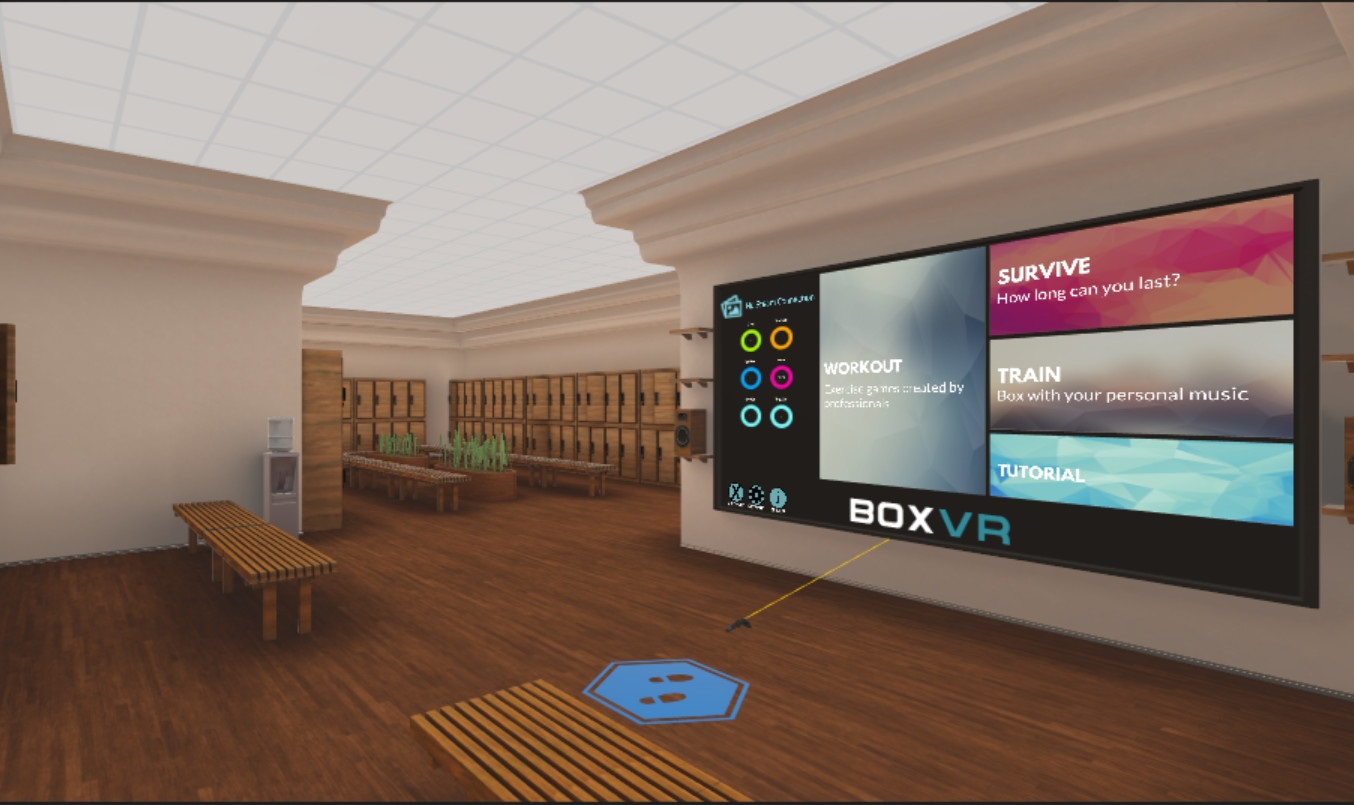
As someone who hated even the concept of a gym, I begrudgingly signed up to my local. It is there I discovered Les Mills Body Pump (choreographed exercise-to-music group fitness classes) and Body Combat (Martial arts inspired cardio). I soon became hooked by the carefully edited music; an essential part to all Les Mills workouts; the intelligently designed structure of the classes, which hits just the right amount of fatigue for various parts of the body, and the fact that each workout is updated every three months, with new moves and a new music playlist, keeping it fresh.
Skip forward a year later, and I am now 158 lbs (11.3 stone in my money) and exercise and fitness is no longer a ‘concept’ to me – it is an activity I enjoy, and look forward to doing. As you can guess, as someone who has been involved with virtual reality for quite some time, I have been fascinated as to how my two interests could combine, and I am certainly not alone.
In fact, there is an entire institute dedicated to virtual reality fitness – The Virtual Reality Institute of Health and Exercise, which was established to better understand the calorie impact of VR experiences on the human body.
They independently assess VR games in a controlled environment, with the aim of publishing the results through a fitness rating system having found many VR apps are more effective at burning calories than a treadmill. In fact, at the time of writing, the Institute has worked out that 152 million calories have been burnt (the equivalent of running around the Earth 46 times) from playing rhythm VR title Audioshield since its release in 2016.
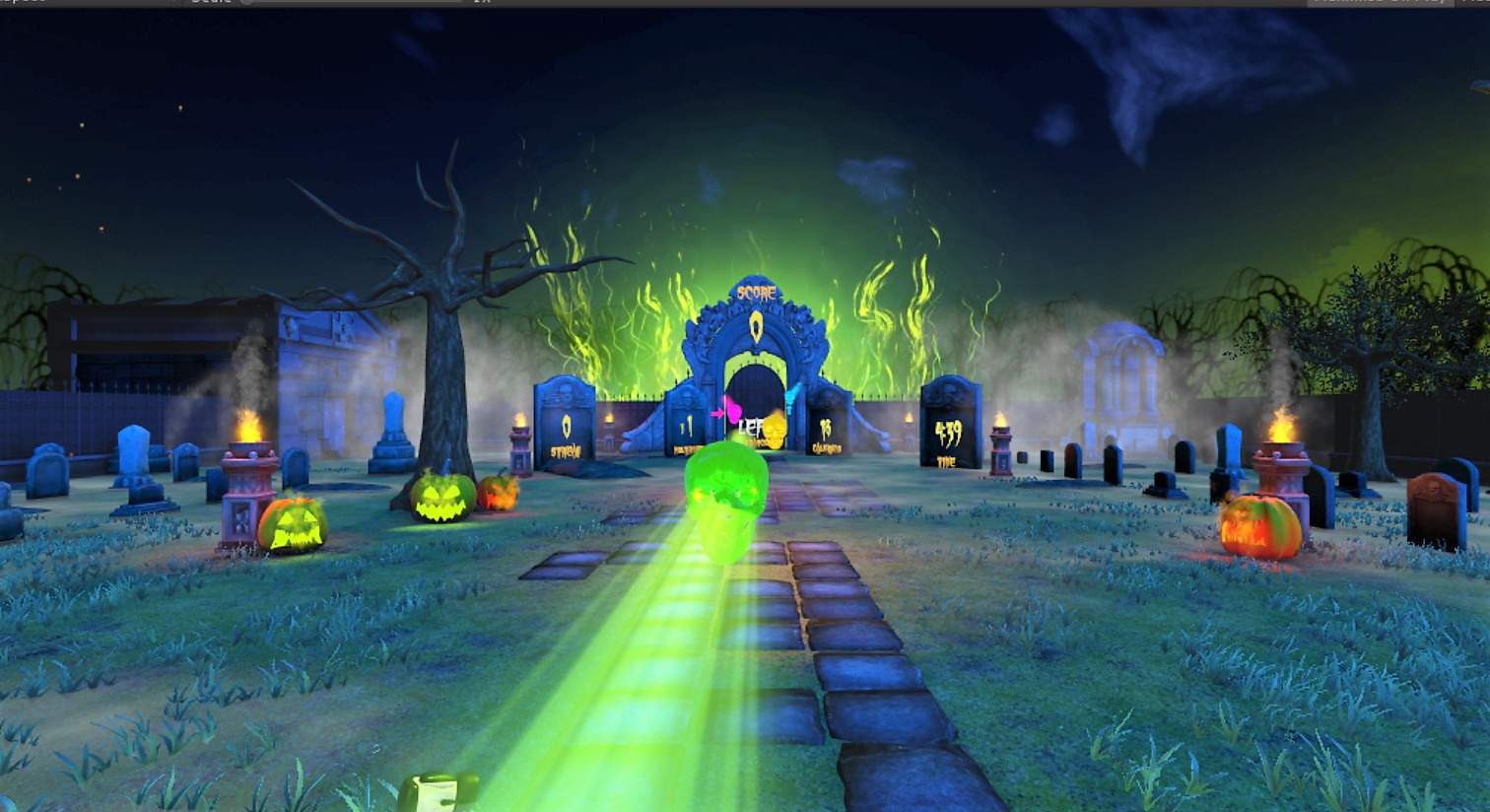
A guy called Tim Donahey AKA u/leppermessiah1 created his own VR fitness regime. For 50 days he played 4 Vive games over an hour (9 min: Audioshield, 20 min: Thrill of the Fight, 20 min: Holopoint, 10 min: Holoball per day). The result was a weight loss of 14.4 lbs.
I am currently curating content for the Future Tech Now and Virtual Reality 2018 show, and part of that involves putting together a virtual reality gym. Throughout my research, it has been incredibly exciting to discover the startups who are exploring the use of immersive technologies to make exercise more intense, more engaging, more competitive and above all – less boring!
Despite my love of Les Mills classes, sometimes it is not always convenient to get to the gym. By the time I have factored in the 40 minute walk each way, a gym session can take up 2.5 hours in total. Combine that with the recent ‘chaos’ from the UK ‘snowbomb’, a walk on a Sunday morning in bitterly freezing temperatures can test (and sometimes beat) my willpower. If there was a complimentary experience I could do at home, that was able to replicate some of the features of a Les Mills class – the music, the updates and the intelligently designed workouts, I would be a happy gym bunny.
I have been aware of games such as the aforementioned Audioshield and Holodance before, which by default require you to move vigorously to ‘block the beats’ but the calories burnt from such games are a welcome consequence rather than core objective, so I jumped at the chance to try BOX VR, by boutique VR dev studio FitXR recently.
As you can probably guess, it is a rhythm based VR boxing game. Available for Oculus, Vive and recently Windows MR, the title has been designed in conjunction with real life boxing instructors and offers a range of workouts defined by time, intensity and calorie burn goal. Before trying the game, I asked the two FitXR co-founders – Sam Cole and Sameer Baroova, what differentiated this from rhythm games.
“In the beginning we were really interested in this tech and seeing what was happening with Les Mills and immersive fitness. Digging deeper we learnt very quickly that music underpins a lot of these fitness classes. Our instructors have a lot of experience in dance, and teach boxing as if teaching dancing. They understand the importance of the music and this approach has been really informative as to how we designed BOX VR.” said Cole.
Personally I am very interested as to how scientific research can quantify virtual reality fitness. The very nature of room scale virtual reality means, not only can the tracking be used for the game mechanics, but also register and feedback the user’s movement over time, adjusting the goals and gameplay in real time. I asked Cole if they planned to conduct scientific research into the ability of BOX VR to get the same results as a gym workout:
“The science is what we are extremely interested in. At the VR Health Institute, they did a piece with the Discovery Channel. Their presenter had their heart rate monitored and his exertion was measured during a session of BOX VR. The results showed the maximum level of exertion was the same as someone going for a sprint.”
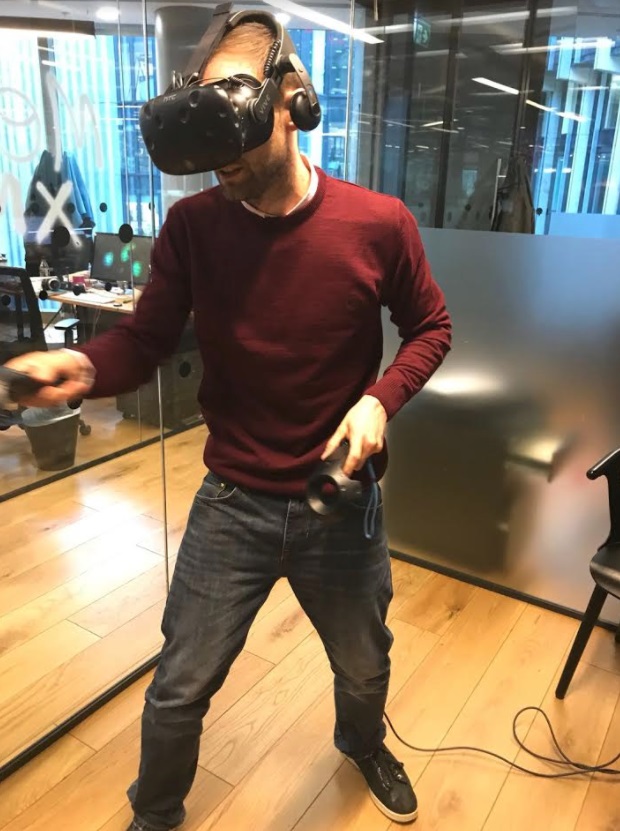 I was super impressed by BOX VR. I was a little sceptical at first, thinking I would feel restricted by the weight of the headset and being tethered to a computer, but I didn’t even notice when I was playing. During the 3 minute sequence, I was visually guided to left hook, right hook, straight punch and uppercut as well as duck and change stance. It was seriously intense. Every 30 seconds or so there was a short rest bite, following the protocol of HiiT (High-intensity interval training) that has been scientifically proven to get faster results. After I removed the Vive, I was feeling the same rush as I do after a Body Combat class. In fact, from a resting heartbeat of 71BPM, I measured 156BPM after just 3 minutes. I was also impressed that it did not require a large footprint. One issue with watching workout videos at home is the space certain workouts can require. BOX VR has obviously been designed for people with small spaces in mind.
I was super impressed by BOX VR. I was a little sceptical at first, thinking I would feel restricted by the weight of the headset and being tethered to a computer, but I didn’t even notice when I was playing. During the 3 minute sequence, I was visually guided to left hook, right hook, straight punch and uppercut as well as duck and change stance. It was seriously intense. Every 30 seconds or so there was a short rest bite, following the protocol of HiiT (High-intensity interval training) that has been scientifically proven to get faster results. After I removed the Vive, I was feeling the same rush as I do after a Body Combat class. In fact, from a resting heartbeat of 71BPM, I measured 156BPM after just 3 minutes. I was also impressed that it did not require a large footprint. One issue with watching workout videos at home is the space certain workouts can require. BOX VR has obviously been designed for people with small spaces in mind.
You can tell this is just the start of what BOX VR can do – once you throw in more environments, leaderboards, multiplayer and rich personalised data, this could develop into a genuine compliment (or even alternative) to the gym. Personally I would never give up the gym; I like the rapport of the instructors and the atmosphere of being in a group of people all synchronised to the same movement – I don’t think virtual reality could (or even should) replace that. But for the time poor or those who are looking to speed up their results during the days when going to the gym is not an option, BOX VR could be a great way to fast forward post holidays weightloss!
BOX VR is available to download on the Steam store.
This is a guest post written by Jonathan Tustain that was not produced by the UploadVR staff other than minor formatting and editing. No compensation was exchanged for the creation of this content.
Jonathan Tustain has been involved with virtual reality since 2012. He runs the London Virtual Reality Developer Meetup and recently completed the book, The Complete Guide to Virtual Reality, which is out in 2018. He is particularly interested in how immersive technologies can go beyond entertainment and improve productivity, training and education.

